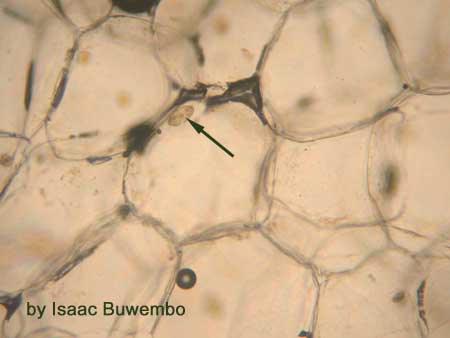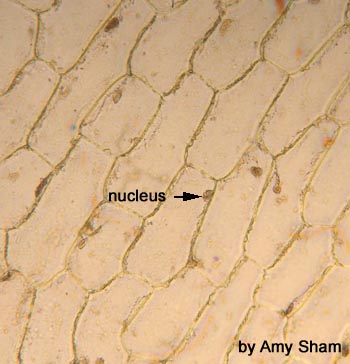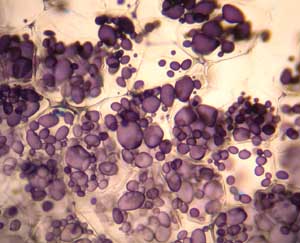Parenchyma Tissue
Onion
This is a thin slice of tissue from the onion bulb. What shape are the cells? The arrow indicates the nucleus of a cell.
Although parenchyma cells are often isodiametric, they do come in a variety of shapes. For example here are some more elongate parenchyma cells from onion.
Potato Tuber
Parenchyma cells are living, usually isodiametric in shape and relatively unspecialized in function. They are the primary component of the ground tissue system of plants (the continuous tissue) and, as such, are present in leaves, stems, and roots. Reserve food storage takes place within parenchyma cells; such as this picture of potato parenchyma stained with IKI to show the many grains of starch.
Elodea
Other important functions include photosynthesis, such as the cells of the water plant Anacharis (also called Elodea). Such cells are pictured to the left. Note the numerous chloroplasts.
Since they are unspecialized, parenchyma cells can often resume meristematic activity, and thus function in the formation of adventitious roots and in wound healing. Below are some other examples of parenchyma tissue in other plants.
Other tissue types:
COLLENCHYMA
SCLERENCHYMA
BACK TO GROUND TISSUE SYSTEM FRONTPAGE




